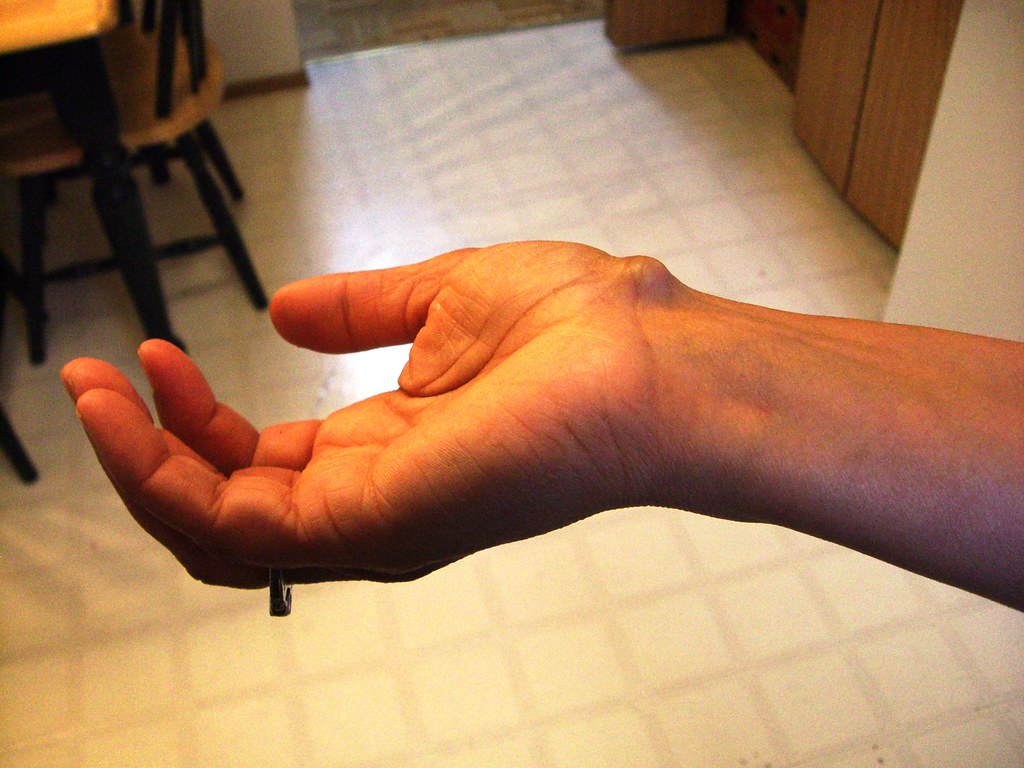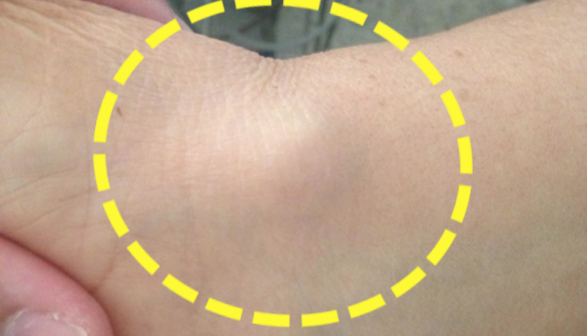A ganglion cyst, often referred to as GC, is a noncancerous lump that typically develops along the tendons or joints of the wrists or hands. However, it can also occur in other areas such as the feet or ankles. These cysts are filled with a jelly-like fluid and can vary in size, often changing dimensions over time. While they are generally harmless, they can sometimes cause discomfort or interfere with joint movement. This article will explore what a ganglion cyst is, its causes, symptoms, and available treatment options.

What Is a Ganglion Cyst?
A ganglion cyst is a benign, fluid-filled sac that forms near a joint or tendon. It is one of the most common soft tissue tumors found in the body. The cyst itself is smooth, round, or oval-shaped and may feel firm or spongy to the touch. Its size can fluctuate depending on activity levels, and in some cases, it may even disappear on its own without any intervention.
Ganglion cysts are most frequently observed in individuals between the ages of 15 and 40, with women being more likely to develop them than men. Although these cysts are not life-threatening, their presence can sometimes lead to discomfort or aesthetic concerns, prompting individuals to seek medical advice.
Causes of Ganglion Cysts
The exact cause of ganglion cysts remains unknown, but researchers have identified several factors that may contribute to their development:
- Trauma or Injury: Damage to the joint or surrounding tissues may lead to the formation of a cyst. The injury could disrupt the normal structure of the joint, causing fluid to accumulate and form a cyst.
- Joints Under Stress: Repetitive movements or stress on a joint, such as those experienced by athletes or individuals who perform manual labor, may increase the likelihood of developing a ganglion cyst.
- Joint Degeneration: Conditions like arthritis can weaken the joint lining, making it more susceptible to cyst formation.
- Genetic Predisposition: Some individuals may be genetically predisposed to developing ganglion cysts due to inherited traits affecting joint or tendon structure.
While these factors may play a role, it is important to note that many people develop ganglion cysts without any clear underlying cause.
Symptoms of Ganglion Cysts
Ganglion cysts can present a variety of symptoms, although some individuals may experience no symptoms at all. Common signs and symptoms include:
- A Visible Lump: The most obvious symptom is the presence of a noticeable lump near a joint or tendon. The lump may appear suddenly or grow gradually over time.
- Pain or Discomfort: If the cyst presses on nearby nerves, it can cause pain, tingling, or muscle weakness. The level of discomfort often correlates with the size of the cyst and its location.
- Limited Range of Motion: A large cyst may interfere with joint movement, making it difficult to perform certain activities.
- Changes in Size: Ganglion cysts can fluctuate in size, becoming larger with increased activity and smaller during periods of rest.
In some cases, the cyst may be so small that it is not visible to the naked eye but can still cause symptoms if it presses on a nerve or tendon.
Diagnosis of Ganglion Cysts
If you suspect you have a ganglion cyst, it is important to consult a healthcare professional for an accurate diagnosis. The diagnostic process typically involves the following steps:
Physical Examination
During a physical examination, the doctor will assess the lump’s size, shape, and location. They may apply pressure to determine if the cyst causes pain or discomfort. In some cases, the doctor may shine a light through the cyst to confirm that it is filled with fluid.
Imaging Tests
To rule out other conditions, such as tumors or arthritis, imaging tests may be recommended:
- X-rays: These are used to examine the bones and joints for any abnormalities.
- Ultrasound: This test helps differentiate between solid masses and fluid-filled cysts.
- Magnetic Resonance Imaging (MRI): An MRI provides detailed images of the soft tissues, helping to confirm the diagnosis and assess the cyst’s relationship to nearby structures.
Treatment Options for Ganglion Cysts
The treatment approach for a ganglion cyst depends on its size, location, and whether it causes symptoms. In many cases, no treatment is necessary, especially if the cyst is painless and does not interfere with daily activities. However, if the cyst causes discomfort or affects joint function, several treatment options are available:
Observation
For asymptomatic cysts, doctors often recommend a “wait and watch” approach. Regular monitoring allows the healthcare provider to observe any changes in the cyst’s size or symptoms over time. Many ganglion cysts resolve on their own without intervention.
Immobilization
If the cyst causes pain or limits movement, immobilizing the affected area with a brace or splint may help. Reducing movement can decrease the size of the cyst and alleviate symptoms. Once the cyst shrinks, physical therapy may be recommended to restore strength and flexibility to the joint.
Aspiration
Aspiration is a procedure in which a doctor uses a needle to drain the fluid from the cyst. This is typically done under local anesthesia to minimize discomfort. After the fluid is removed, a steroid medication may be injected into the area to reduce inflammation and prevent the cyst from returning. While aspiration can provide temporary relief, there is a risk of recurrence since the root cause of the cyst is not addressed.
Surgical Removal
In cases where the cyst is persistent, painful, or interferes with joint function, surgical removal may be recommended. During the procedure, the cyst and a portion of the joint capsule or tendon sheath are removed to reduce the risk of recurrence. Surgery is usually performed on an outpatient basis and may involve either open surgery or arthroscopy, a minimally invasive technique.
While surgery is effective in removing the cyst, it is not without risks. Potential complications include infection, scarring, and damage to nearby nerves or blood vessels. Additionally, there is still a small chance that the cyst may return after surgery.
Home Remedies and Self-Care
Although home remedies cannot eliminate a ganglion cyst, they can help manage symptoms and promote comfort:
- Rest: Avoid activities that aggravate the cyst and allow the affected area to rest.
- Warm Compresses: Applying warm compresses to the cyst may help reduce discomfort and improve blood circulation to the area.
- Over-the-Counter Pain Relievers: Nonsteroidal anti-inflammatory drugs, such as ibuprofen, can help alleviate pain and reduce inflammation.
It is important to avoid attempting to “pop” or puncture the cyst at home, as this can lead to infection or further complications.
Preventing Ganglion Cysts
While it may not always be possible to prevent ganglion cysts, certain measures can reduce the risk of their development:
- Protect Joints: Use protective gear during sports or activities that place stress on the joints.
- Practice Good Ergonomics: Maintain proper posture and use ergonomic tools to reduce strain on the hands and wrists.
- Stretch and Strengthen Muscles: Regular stretching and strengthening exercises can improve joint stability and reduce the likelihood of injury.
- Address Joint Issues Early: Seek prompt treatment for joint pain or injuries to prevent long-term damage.
By taking these preventive steps, individuals can minimize their risk of developing ganglion cysts and maintain optimal joint health.





